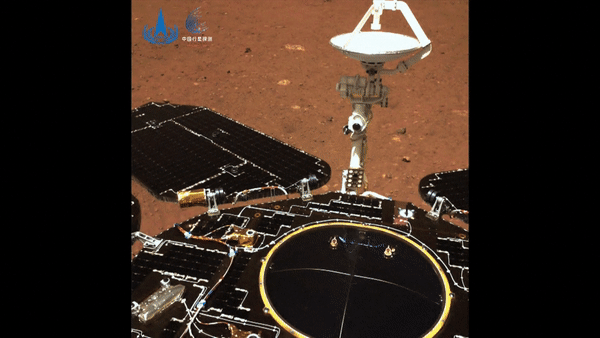
The chief designer of China's Mars exploration program has provided a long-awaited comment on the status of the country's Zhurong Mars rover.
The solar-powered Zhurong rover, which is part of China's Tianwen 1 Mars mission, had been hibernating during winter in the planet's northern hemisphere since May 2022. It was expected to wake up autonomously in December, once lighting conditions and temperature had improved.
However, China remained silent regarding Zhurong as December came and went. NASA's Mars Reconnaissance Orbiter confirmed in February that the rover has remained stationary for months.
Related: Chinese scientists hold out hope for silent Zhurong Mars rover

Now, mission chief designer Zhang Rongqiao told China Central Television this week that the team believes Zhurong has not woken up because a higher-than-expected amount of dust has accumulated on the rover's solar panels. This means sunlight received by Zhurong has not been sufficient for it to wake up.
"We estimate that the biggest possibility is that the unpredictable accumulation of dust on Mars has led to a decrease in power generation capacity, which is not high enough to wake it up," Zhang said.
The threshold for Zhurong to resume activities is a temperature of greater than 5 degrees Fahrenheit (minus 15 degrees Celsius) and energy generation of greater than 140 watts.
Zhang said that if dust levels on the panels were 30% greater than expected, then Zhurong would require the strongest sunlight levels on Mars to reactivate. A level of 40% or more above expected levels would mean the rover will not be able to wake up.
Summer solstice in the northern hemisphere on Mars occurs in mid-July, according to the Planetary Society, when lighting and temperature conditions may be the most favorable.
Both of NASA's long-lived Spirit and Opportunity rovers finally succumbed to Martian dust covering their solar panels, reducing power generation to below adequate levels for operation.
Zhurong landed in Utopia Planitia in May 2021, marking success at the first attempt at a Mars landing for China. The rover entered a dormant mode in May 2022.
Whether or not Zhurong comes back to life, the mission already exceeded its planned lifetime of three Earth months. The rover has also, like its companion Tianwen 1 orbiter, completed its primary science goals.
Follow us @Spacedotcom, or on Facebook and Instagram.







